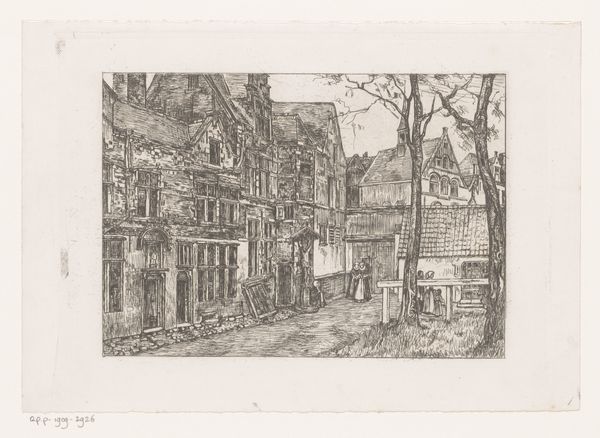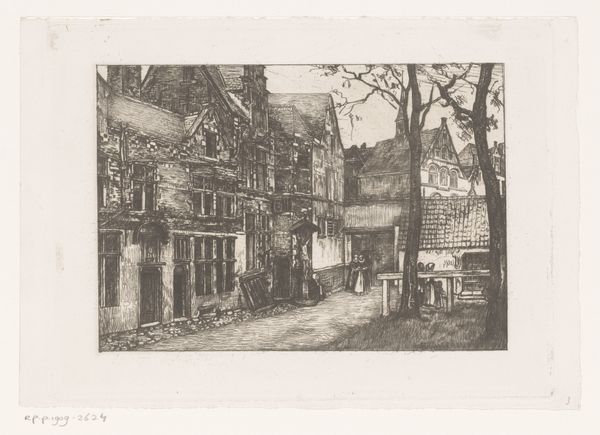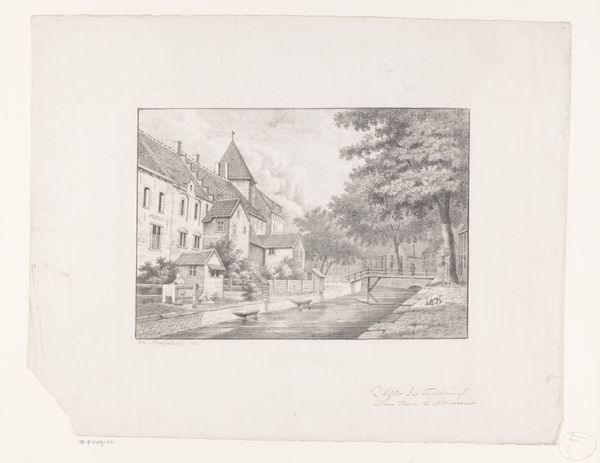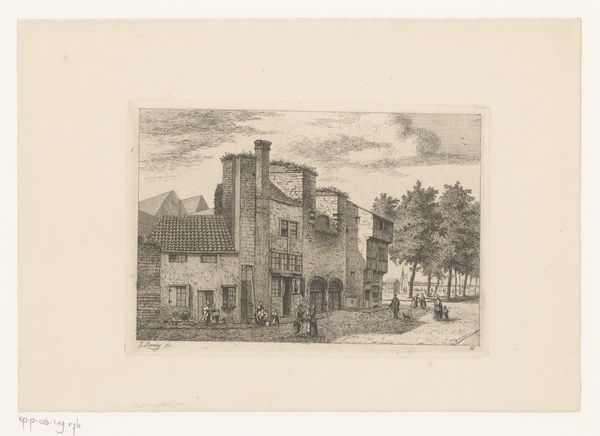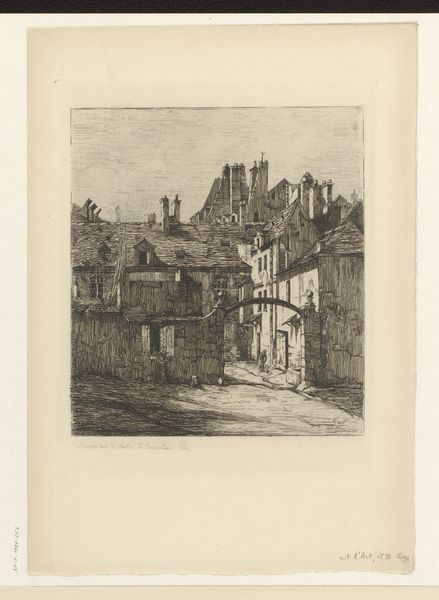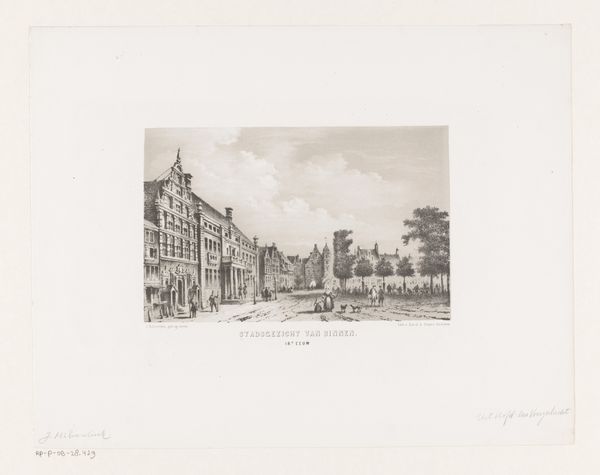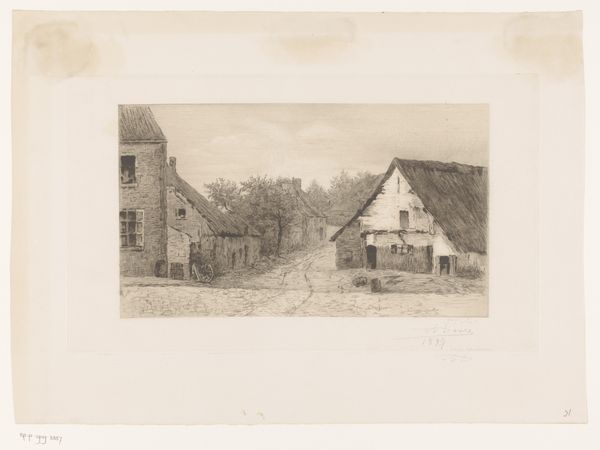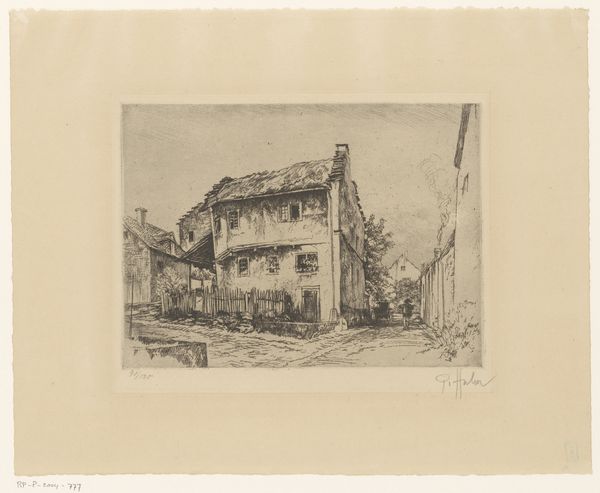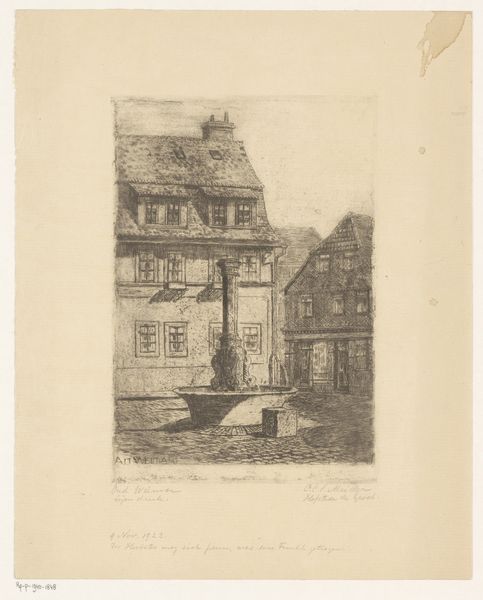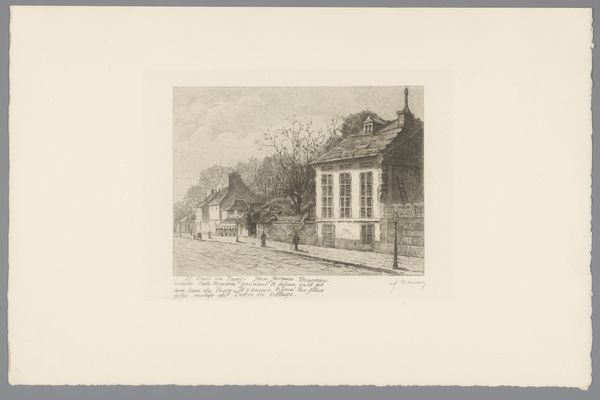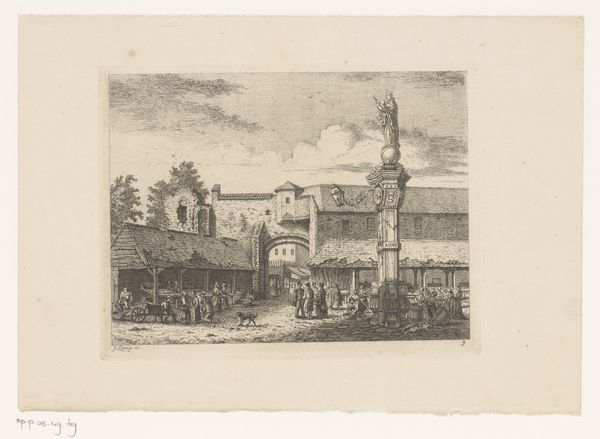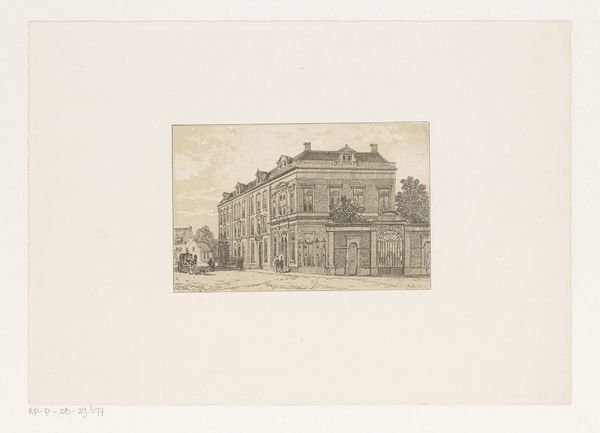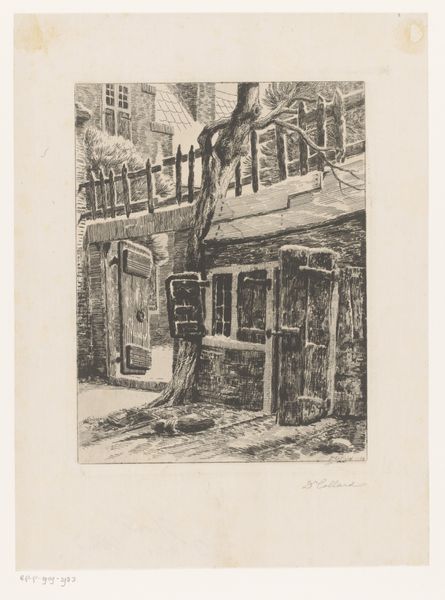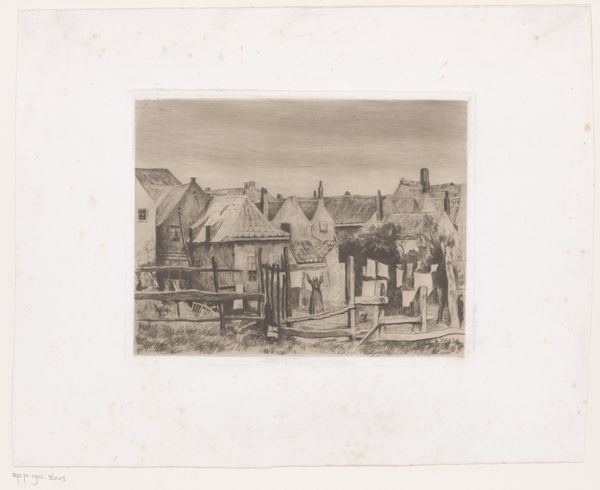
print, etching, engraving
# print
#
etching
#
landscape
#
cityscape
#
engraving
#
realism
Dimensions: height 185 mm, width 250 mm
Copyright: Rijks Museum: Open Domain
Curator: Looking at this etching, entitled "Hof van het Sint-Anna hospitium te Antwerpen," we see Théodore Joseph Cleynhens's rendering of a cityscape from somewhere between 1851 and 1909. The work is created using print and engraving techniques, a detailed landscape showing us a place steeped in history. What strikes you first about this piece? Editor: It feels melancholy. The stark black and white, the detailed rendering of aged buildings, it evokes a sense of quiet, almost palpable loneliness. The detail is beautiful, though. The artist has really captured the texture of the stone. Curator: The image gives us a glimpse into the everyday life around the Sint-Anna hospitium. It's interesting how Cleynhens used the etching process to depict the architecture. He doesn't just show the buildings; he documents their existence in the urban fabric of Antwerp, connecting it to notions of welfare and community care. We see a social institution visualized, one wonders who he was hoping would view this image. Editor: Absolutely. And I am curious about the representation of gender in the cityscape—women feature minimally in this rendering of urban life, a reality reflected across similar artworks of this era. Does this say anything about gendered access to and negotiation of urban space and its association with institutions like this hospitium? It almost invites us to critically examine these spaces for any prevailing social biases, right? Curator: Indeed. Considering the artwork's potential period and the institutional history, reflecting on care economies and those social systems definitely opens up interpretive possibilities. The role of women, both as caregivers and those needing care, might inform the subject matter here; after all, such institutions had clear societal functions for both wealthy benefactors and those receiving assistance. Editor: Right, because we could deconstruct the idea of welfare itself, locating the artwork at the nexus of gender, power, and social obligation, to analyze the visual representation of care during that era. Curator: Viewing Cleynhens's etching in this way helps to challenge the notion that the function of art exists apart from social and historical discourses. Editor: Yes. Instead it allows a broader analysis on visuality and care beyond its aesthetic merit and makes it meaningful today.
Comments
No comments
Be the first to comment and join the conversation on the ultimate creative platform.
